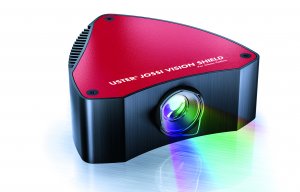
System gains from customer feedback
Uster Jossi Vision Shield is said to have the power to identify and remove fragments as fine as a single human hair.

23rd November 2017
Innovation in Textiles
|
Uster
The Uster Jossi Vision Shield fibre cleaning system, key to the company’s Total Contamination Control, provides maximum detection of contaminants with minimal waste, offering a solution to the problem of contamination in fabrics for critical applications. Located in the ideal position, after fine opening in the blowroom, the system uses latest-technology spectroscopes to pinpoint even the smallest particles of foreign matter in the cotton or man-made fibre raw material.
When textile products are intended for critical end-uses, such as medical, personal care and hygiene applications, there can be no compromises on quality, as they must both look and feel virtually perfect, to meet the expected standards for cleanliness and comfort, especially when they come into contact with human skin in use.

“So, any contamination in these fabrics is a potentially disastrous quality risk, leading to claims and returned rejects. Zero tolerance levels for defect larger than 1 mm are standard. Tiny fragments of foreign matter in the fibre could remain visible as unsightly blemishes, as well as scratching or abrading the user’s skin,” the company explains.
“Typically, fabrics for these sensitive applications are made by the spunlacing process, which starts with the fibre raw material in loose stock form. This is where it is crucial to remove any contaminants, before they reach the fabrication process. At the same time, the nonwovens producers must preserve as much valuable ‘good’ fibre as possible, minimising waste to maintain plant efficiency and profitability.”
Covering a much wider wavelength than conventional camera systems, Uster Jossi Vision Shield is said to have the power to identify and remove fragments as fine as a single human hair. At this stage in the fibre preparation routine, detection is enhanced, since the fibre tufts have the optimum opening to prevent any small contaminants being hidden inside them.

Once identified, the foreign matter pieces are automatically ejected by the system, preventing contamination of the spunlaced fabric. Some waste here is inevitable, but Uster Jossi Vision Shield controls this by continuously measuring the speed at which the fibre tufts pass through. It then uses precision valves to time each ejection perfectly, so that only the unwanted contaminant is removed, with an absolute minimum of good fibre being lost. The cost savings for the producer can be significant, the company reports.
The quality demands facing nonwovens manufacturers in these key applications are stringent. For example, it is unacceptable to allow any kind of stray material in hospital products such as absorbent cotton, alcohol swabs, or surgical gauze.

According to the manufacturer, Uster Jossi Vision Shield gives spunlace producers the confidence and security to avoid quality issues in this demanding marketplace. Its technology can cope with both IR and UV light ranges and it can detect various types of foreign matter. All kind of synthetics and even the finest scraps of white polypropylene – otherwise difficult to pick out – are removed, using the Uster Jossi Magic Eye in tandem with the Uster Jossi Vision Shield.
“This technology combination empowers nonwovens producers to take control of contamination at the highest levels of quality and efficiency, making investment Uster Jossi Vision Shield a logical choice for fibre cleaning,” the company comments.

Business intelligence for the fibre, textiles and apparel industries: technologies, innovations, markets, investments, trade policy, sourcing, strategy...
Find out more